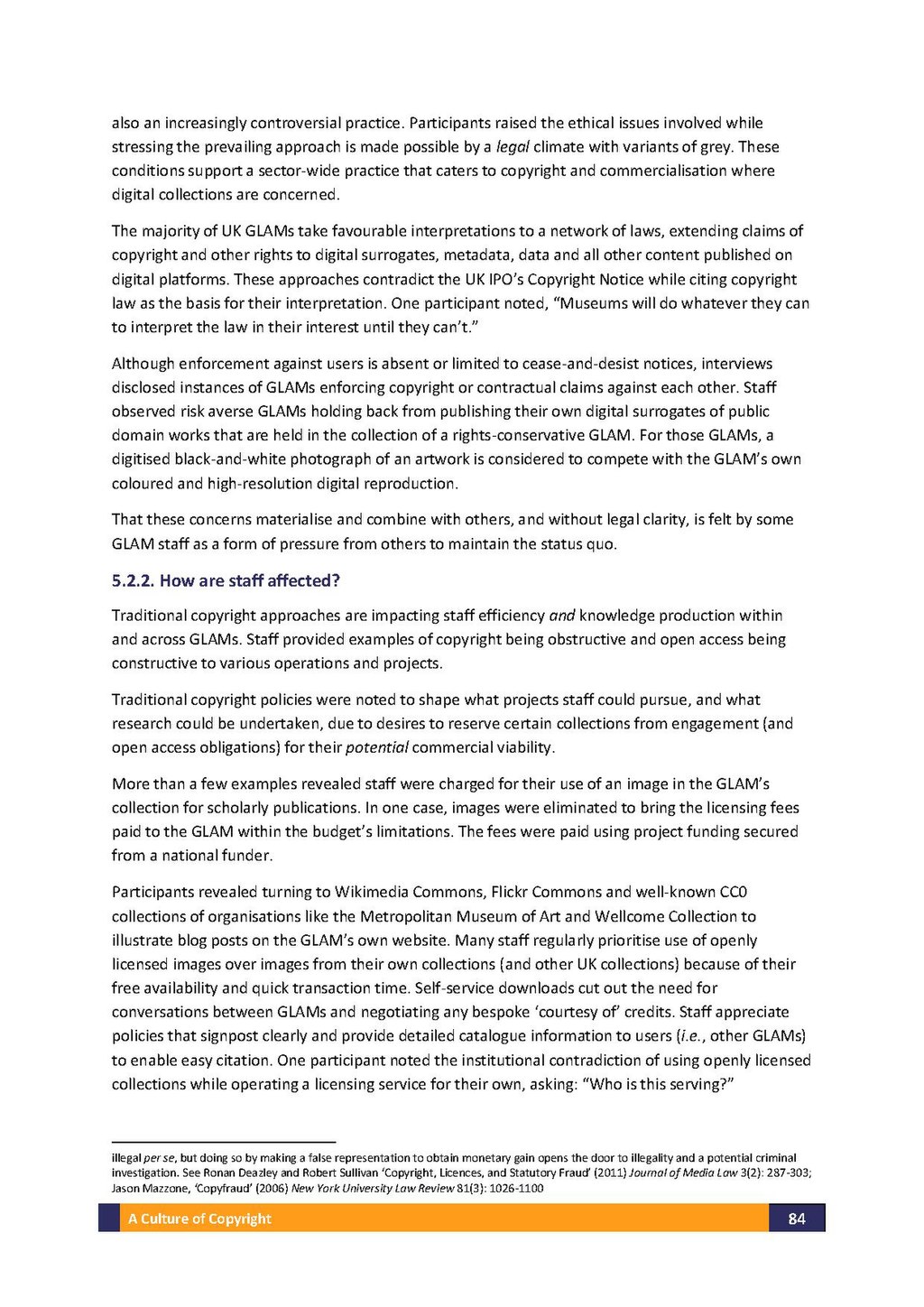also an increasingly controversial practice. Participants raised the ethical issues involved while stressing the prevailing approach is made possible by a legal climate with variants of grey. These conditions support a sector-wide practice that caters to copyright and commercialisation where digital collections are concerned.
The majority of UK GLAMS take favourable interpretations to a network of laws, extending claims of copyright and other rights to digital surrogates, metadata, data and all other content published on digital platforms. These approaches contradict the UK IPO's Copyright Notice while citing copyright law as the basis for their interpretation. One participant noted, "Museums will do whatever they can to interpret the law in their interest until they can't."
Although enforcement against users is absent or limited to cease-and-desist notices, interviews disclosed instances of GLAMS enforcing copyright or contractual claims against each other. Staff observed risk averse GLAMS holding back from publishing their own digital surrogates of public domain works that are held in the collection of a rights-conservative GLAM. For those GLAMS, a digitised black-and-white photograph of an artwork is considered to compete with the GLAM's own coloured and high-resolution digital reproduction.
That these concerns materialise and combine with others, and without legal clarity, is felt by some GLAM staff as a form of pressure from others to maintain the status quo.
5.2.2. How are staff affected?
Traditional copyright approaches are impacting staff efficiency and knowledge production within and across GLAMS. Staff provided examples of copyright being obstructive and open access being constructive to various operations and projects.
Traditional copyright policies were noted to shape what projects staff could pursue, and what research could be undertaken, due to desires to reserve certain collections from engagement (and open access obligations) for their potential commercial viability.
More than a few examples revealed staff were charged for their use of an image in the GLAM's collection for scholarly publications. In one case, images were eliminated to bring the licensing fees paid to the GLAM within the budget's limitations. The fees were paid using project funding secured from a national funder.
Participants revealed turning to Wikimedia Commons, Flickr Commons and well-known CC0 collections of organisations like the Metropolitan Museum of Art and Wellcome Collection illustrate blog posts on the GLAM's own website. Many staff regularly prioritise use of openly licensed images over images from their own collections (and other UK collections) because of their free availability and quick transaction time. Self-service downloads cut out the need for conversations between GLAMS and negotiating any bespoke 'courtesy of' credits. Staff appreciate policies that signpost clearly and provide detailed catalogue information to users (i.e., other GLAMS) to enable easy citation. One participant noted the institutional contradiction of using openly licensed collections while operating a licensing service for their own, asking: "Who is this serving?"
